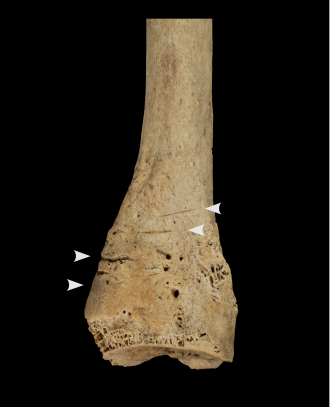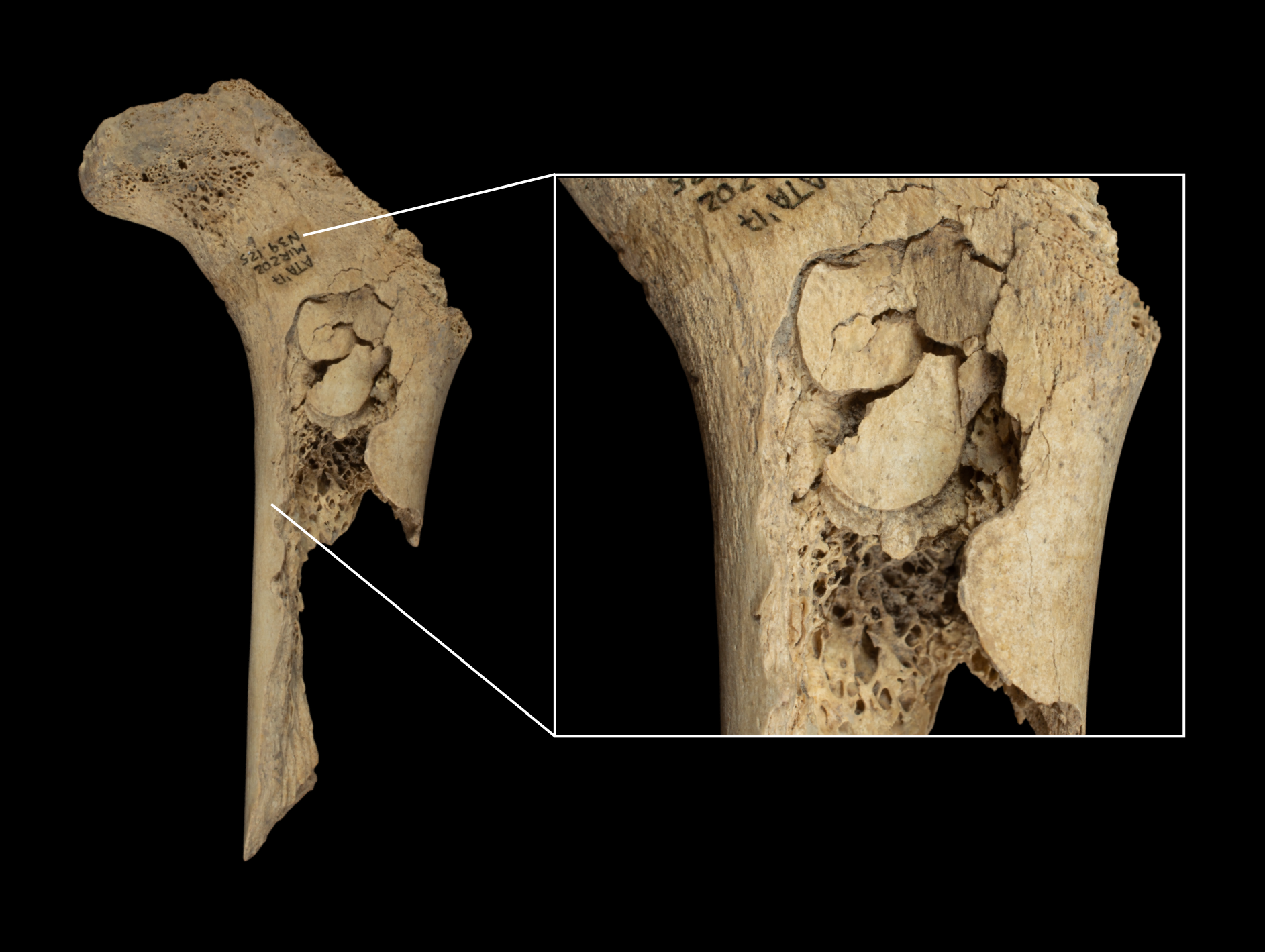Media release
From:
Evidence of Neolithic cannibalism found in Spanish cave
A collection of human remains estimated to be around 5,600 years old may provide further evidence for cannibalism in ancient Spain, suggests a study published in Scientific Reports. The research, which analysed the remains from an estimated 11 individuals found in El Mirador cave in Sierra de Atapuerca, found that several dozen bones displayed signs of cremation, human tooth marks, or butchery, suggesting they underwent processing posthumously.
The Iberian Peninsula contains records of a range of funeral practices, including collective burials and the redistribution of remains after death. While episodes of cannibalism in the peninsula have been documented occurring up to one million years ago, direct evidence of human body processing is rare and difficult to interpret owing to ambiguities around the cultural practices of the time and uncertain burial conditions.
Palmira Saladié, Francesc Marginedas, Antonio Rodríguez-Hidalgo, and colleagues analysed 650 individual fragments of human remains showing signs of posthumous modifications, excavated from two different areas of El Mirador cave and dating to between 5,709 and 5,573 years ago. Children, adolescents, and adults are thought to be among the remains and isotope analysis indicates that they were from local people.
The authors report signs of processing in 239 remains from the sample, which were found mixed in with material from a more recent collective burial. 222 remains demonstrated colour changes associated with cremation, while 69 of these bones also presented signs of butchery, which was likely performed after death. Additionally, 132 human remains also exhibited cut marks including slicing, scraping, and chopping, which may be associated with skinning and flesh removal. The authors also suggest that some remains show possible signs of human tooth marks.
None of the trauma identified appears to have occurred prior to death. The authors state that the pattern of modifications appears most consistent with butchering rather than injuries sustained during conflict or body part removal for trophies. They suggest these findings may reflect a single incident of conflict-related cannibalism indicating deeper social tensions and conflict dynamics characteristic of Neolithic communities.
Multimedia










 International
International



